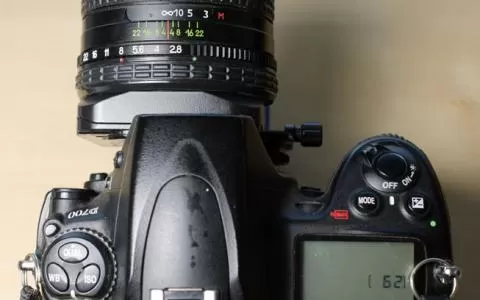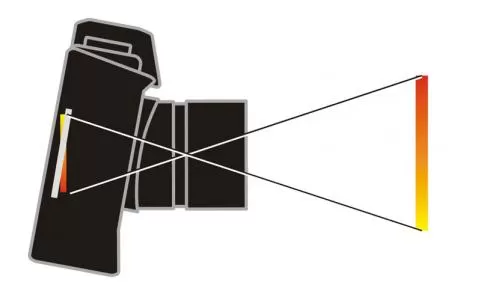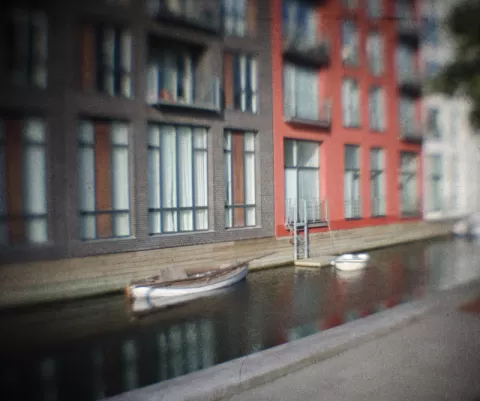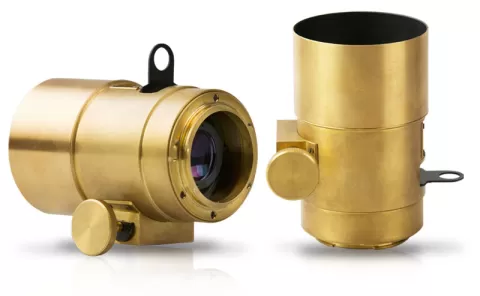Lomography has succeeded on almost all levels with their copy of the Petzval lens. The finished result is beautiful and a real piece of kit.
Lomography has really succeeded on almost all levels with their copy of the Petzval lens. Not only was their crowd funding campaign a huge success with many lenses sold up front, but the finished result is beautiful and a real piece of kit – from the packaging to the look and feel of the lens itself.
I got mine a while back, and my unpacking and first use was just a confirmation of the fact that Lomo has created something good and pretty unique here. The packaging is beautiful showing high quality in design and craft, reminding me of products from Apple, Fuji, HTC and others who turn the experience of unveiling your new gadget into a joy.
The lens itself is even more impressing and beautiful.
It is literally a huge and heavy chunk of brass and is meticulously finished and polished with a great feeling of mechanical quality. The construction itself is primitive to say the least – by design of course. The whole idea is that this is a copy of a lens made in the mid 1800's and there's no electronics, no iris aperture and no intricate focus mechanism. The focusing works with a small knob, which you turn to move part of the lens back and forth. The aperture is set by inserting a metal aperture plate called a Waterhouse stop, named after its inventor John Waterhouse. The plates are simply drilled out with holes in various sizes (and shapes), and each f-stop has its own plate, which is pushed into a slit in the lens.
This also means that there's free access to the inside of the lens, since the slit has to be open to the outside. This is of course a potential source of dust and dirt, but the lens can easily be taken apart and cleaned, and a few dust specks will not be likely to have any effect on the finished images.
Everything is manual with this lens. Since there's no means of telling the camera body about its existence or characteristics, you set both focus and exposure fully manual. On high-end bodies like my D200/D300s and D700 you can get some help from the exposure control – either by setting the camera to aperture priority and have it decide the shutter speed or by going manual and using the built-in light meter the old fashioned way, but on the consumer cameras like my D5100 there's only one way: fully manual and checking the exposure on the back of the camera or on a computer.
Neither method is particularly difficult or troublesome and once you have the basic settings you can shoot as you please with very little manual intervention. I have shot the far majority of my Ptzval shots on full manual and simply checked the result now and then on the display.
I like the look of the images and the way the Petzval renders things, but I still miss seeing one of my own pictures with that typical swirly bokeh that I can see on many other images shot with the lens. I can see that it does require a special set of circumstances, and I will get there eventually as I get to shoot more with the lens.
What I see in my Petzval images now is a nice sharpness, shallow depth of field and the out of focus areas having kind of a ghostly effect – like an aura around edges and contrasty or patterned areas. I like that look already, but will strive to get the real “Petzval swirl” once I get more practice and more shots in the box.
As I said already the lens is a beautiful piece of mechanics. The mount, the hood, the lid and the focusing knob all have a really nice old fashioned feeling. The lens clicks into position on all my bodies with great precision and there's no play or improper locking (unlike my T&S lens from Photex, which has a really lousy mount).
The focus is fairly coarse with a short travel and does require some finesse to get adjusted precisely. You can use live view and enlargement if your camera supports it, but I have found that the viewfinder and adjusting a little back and forth will do fine.
Changing aperture is of course a special operation, since you have to dig out the proper aperture plate and mount it. Each plate has an f-number printed on it, so you can easily find the one you want. I have shot quite a bit with the lens full open at f/2.2 or f/2.8, but also played with the smaller apertures as well as the special shapes. One thing you have to get used to is that the viewfinder goes darker when you “stop down”. Since the aperture is fixed for each plate and permanently stopped down, the smaller the aperture, the darker the viewfinder. Not a big issue, but just worth noticing.
I just wonder about a couple of things in the design of this lens:
The brass lens cap fits beautifully over the front of the lens when the hood is mounted, but once you unscrew the hood, the cap will not fit the lens itself, which has a larger diameter than the hood! It looks like a very stupid decision to make the hood one diameter and the front of the lens another when it pretty obvious that they could easily be the same width, which would even make the lens look better with the hood mounted.
Same thing goes for the brass barrel. When the lens is focused, the central barrel with the glass moves back and forth inside the outer one. But focused at closest range it protrudes in front of the outer barrel. A very simple design change with a slightly deeper outer tube could have made the inner tube stay inside the outer one, and enabled a filter to be used on the lens at all focus distances.
These design decisions may stem from the original design, but seem really stupid to me. A couple of simple changes would have made the lens much more versatile and flexible.
Lomo has a whole site dedicated to the lens.
The original
While traveling with my wife on the peninsula Jutland in Denmark I visited The Danish Museum of Photography in the town Herning and found a whole display of the original Petzval lenses made by German Voigtländer. There were several models and many different sizes, but one in particular was actually very close to the Lomo model - but without the Waterhouse aperture system. The sign on the lens read: Original lens - as the one used in Voigtländer's metal camera. The first photographically calculated lens constructed by Professor Petzval, Vienna and manufactured by Voigtländer. Lens no. 1404 made in the early 1840's. F/3.4.












